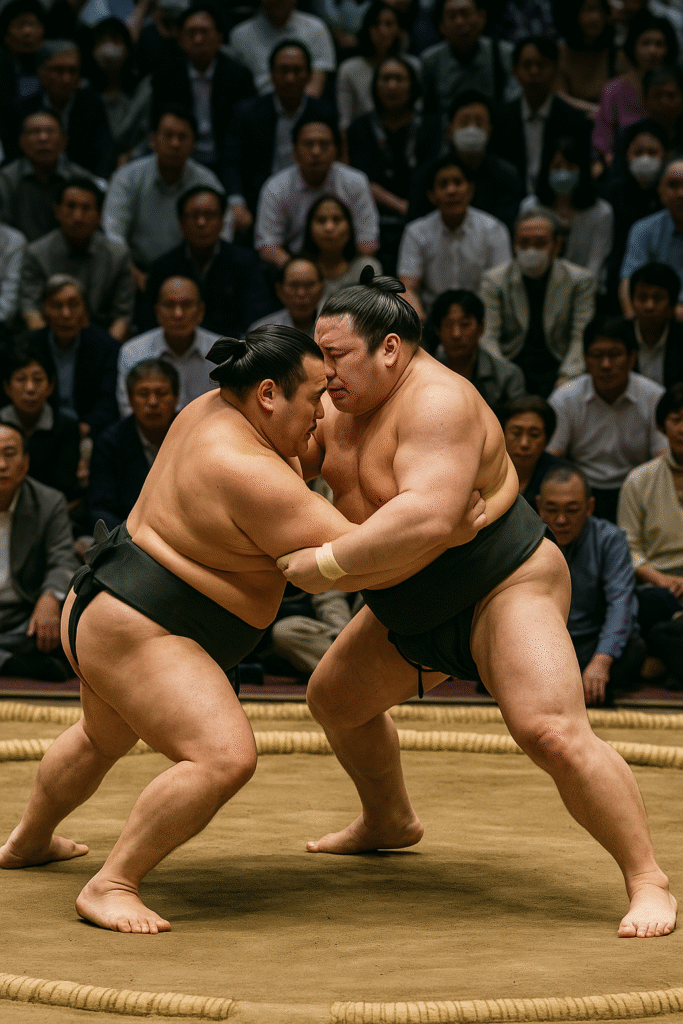
Sumo wrestling is not just a sport in Japan—it’s a centuries-old tradition deeply tied to Shinto rituals, history, and national pride. If you’re visiting Japan and looking for a truly cultural experience, attending a sumo tournament is a must.
🏞️ Introduction
In this guide, we’ll cover everything you need to know:
- When and where sumo tournaments are held
- How to buy tickets
- What to expect on the day
- Proper etiquette while watching
- Tips to enhance your sumo experience
Let’s dive into the world of sumo! 🥋
📍 Where and When to See Sumo in Japan
There are six official Grand Sumo Tournaments (Honbasho) held every year in the following cities:
| Month | Location | Venue |
|---|---|---|
| January | Tokyo | Ryogoku Kokugikan |
| March | Osaka | Edion Arena Osaka |
| May | Tokyo | Ryogoku Kokugikan |
| July | Nagoya | Dolphins Arena |
| September | Tokyo | Ryogoku Kokugikan |
| November | Fukuoka | Fukuoka Kokusai Center |
Each tournament lasts 15 days, usually from the 2nd Sunday of the month.
⚡ If you can’t catch a major tournament, look for local exhibition matches or sumo stables (heya) that allow early morning practice viewing.
🎟️ How to Buy Tickets
Tickets go on sale about 1 month before each tournament. You can purchase them online through:
- Ticket Oosumo (Official)
- Japanican (for tourists)
- Lawson and 7-Eleven ticket machines (in Japanese only)
Types of tickets:
- Box Seats (Masu-seki): Traditional seating on floor mats (up to 4 people)
- Arena Seats: Regular chair-style seats
- Ringside Seats: Closest to the action—but limited and expensive!
💡 Tip: For tourists, Arena B or C seats are comfortable and affordable.
🕒 What Time Should You Go?
- Doors open around 8:00 AM
- Top-ranked wrestlers (Makuuchi) compete from 2:00–6:00 PM
- Arrive early to explore the venue, buy souvenirs, and enjoy food
- Lower-division matches in the morning have a relaxed atmosphere
📸 What to Expect at the Venue
- Sumo venues are decorated with flags and banners of wrestlers
- You can buy bento boxes, drinks, and sumo-themed goods inside
- Match introductions are ceremonial, and each bout lasts only seconds!
🙇️ Sumo Etiquette: Do’s and Don’ts
| ✅ Do | ❌ Don’t |
| Be quiet during matches | Shout or stand up suddenly |
| Remove hats | Eat loudly during fights |
| Respect wrestlers’ space | Cross barriers or throw anything |
| Take photos without flash | Bring large luggage inside |
Sumo is a sacred tradition—respect and quiet appreciation go a long way.
🌸 Pro Tips for Foreign Visitors
- Arrive early for photo ops with wrestlers entering the stadium
- Use Google Translate to understand match cards and schedules
- Visit the Sumo Museum inside Ryogoku Kokugikan (free entry!)
🛫 Bonus: Sumo-Themed Souvenirs
Don’t leave without picking up:
- Sumo-themed chopsticks, keychains, or plush toys
- Printed rankings (Banzuke)
- Limited edition goods from top-ranked Rikishi (wrestlers)
👋 Final Thoughts
Watching sumo live is unlike any other sport—it’s spiritual, powerful, and unforgettable. Whether you’re a first-time visitor or a seasoned traveler, immersing yourself in this timeless Japanese tradition is an experience worth planning for.
🔗 Check the Latest Information
For the most up-to-date schedules, ticket sales, and venue details, please visit the official website of the Japan Sumo Association:
👉 Japan Sumo Association Official Website (English)
This site provides reliable, multilingual information including tournament dates, seat availability, rankings, and more.